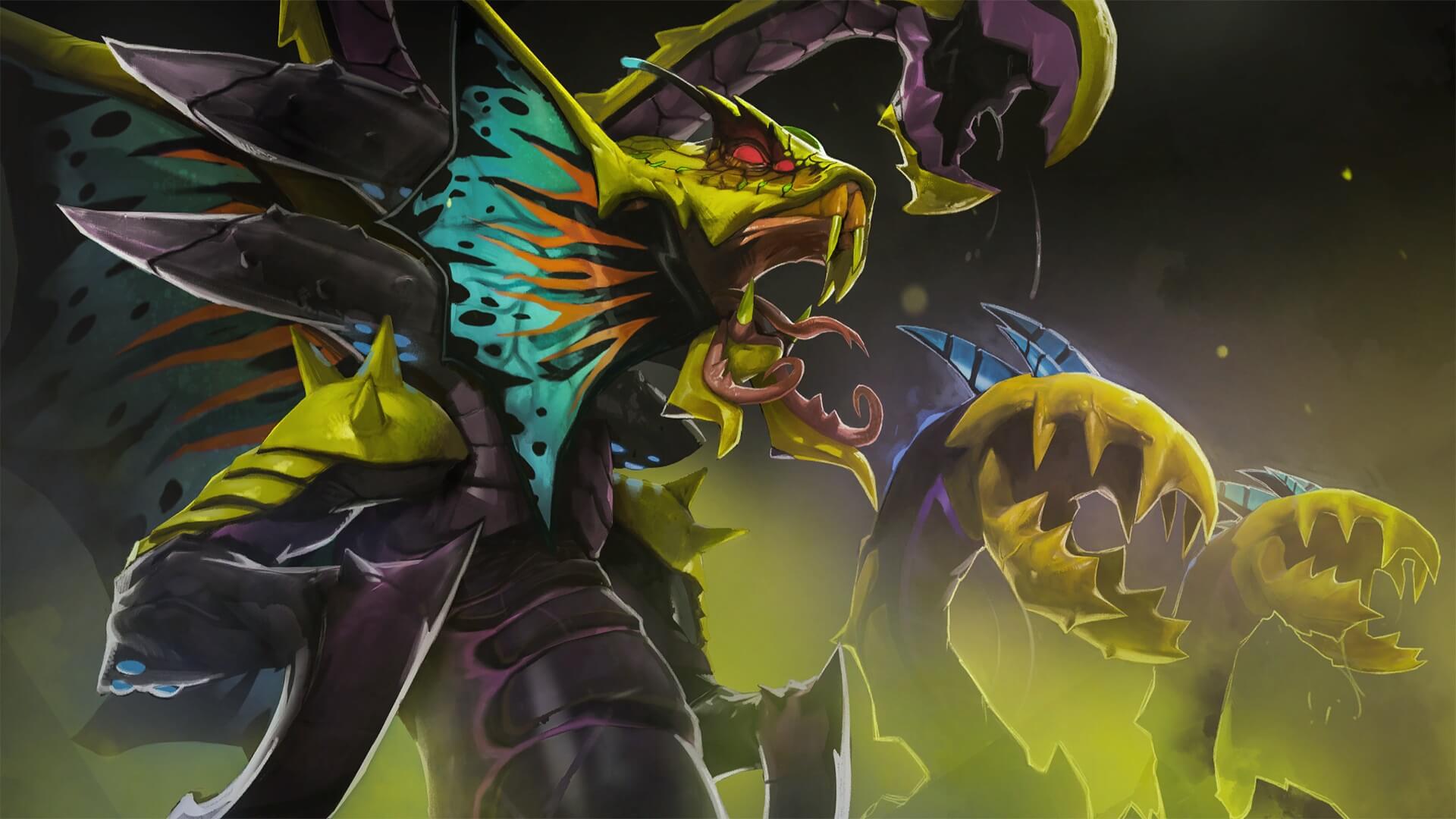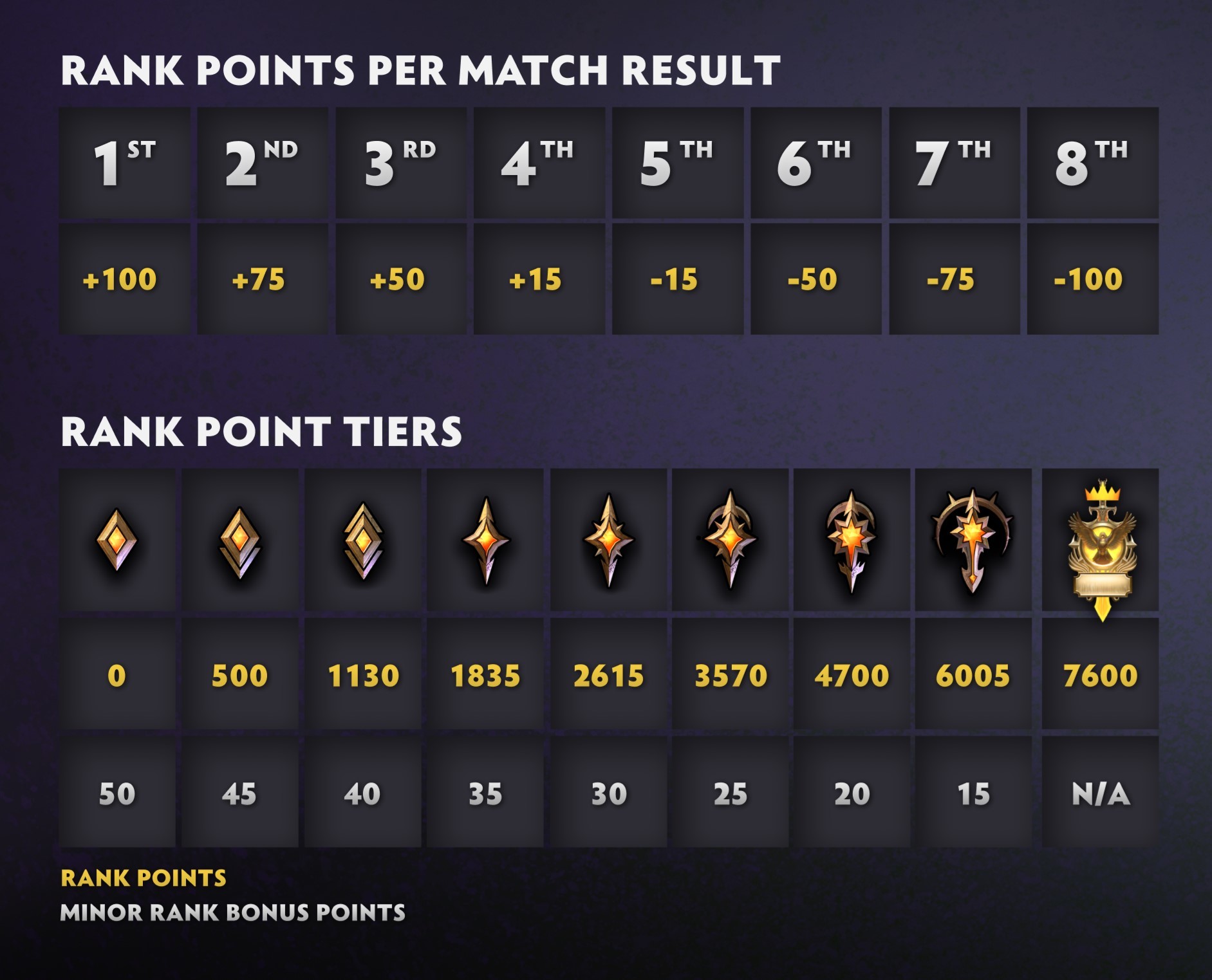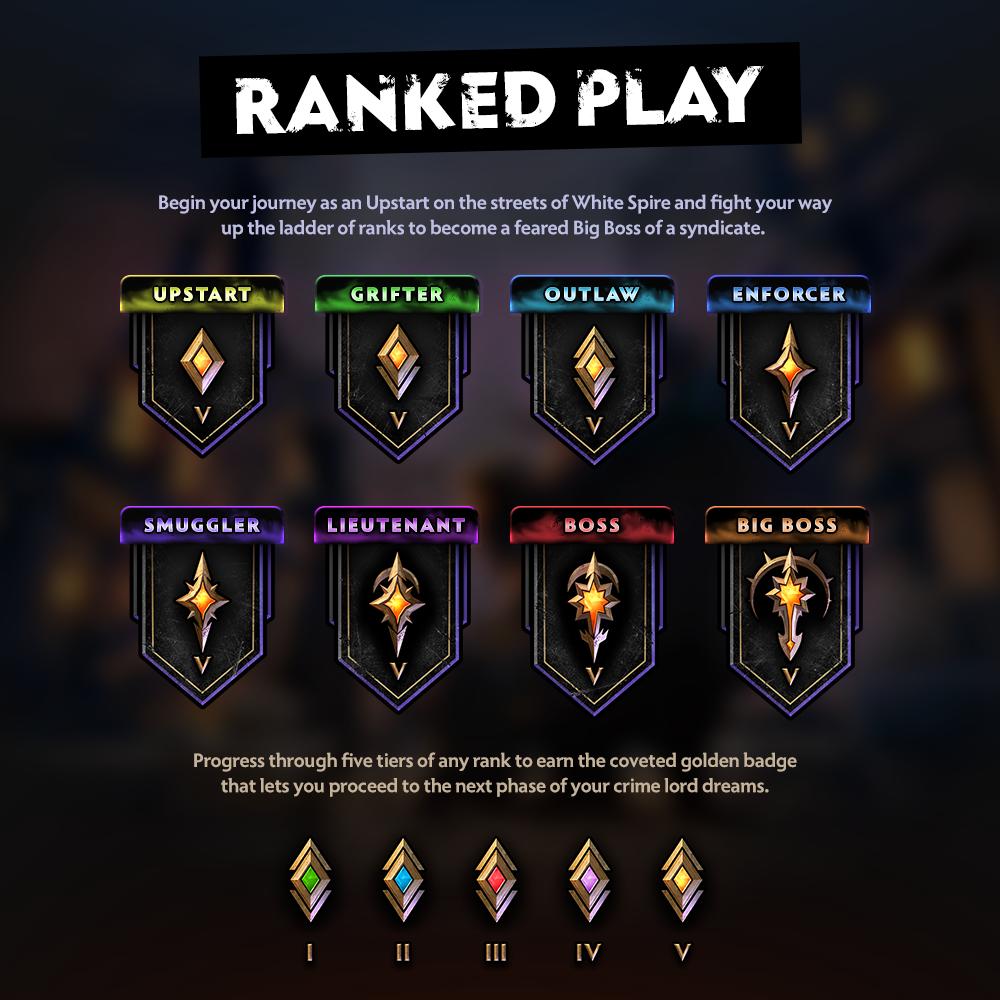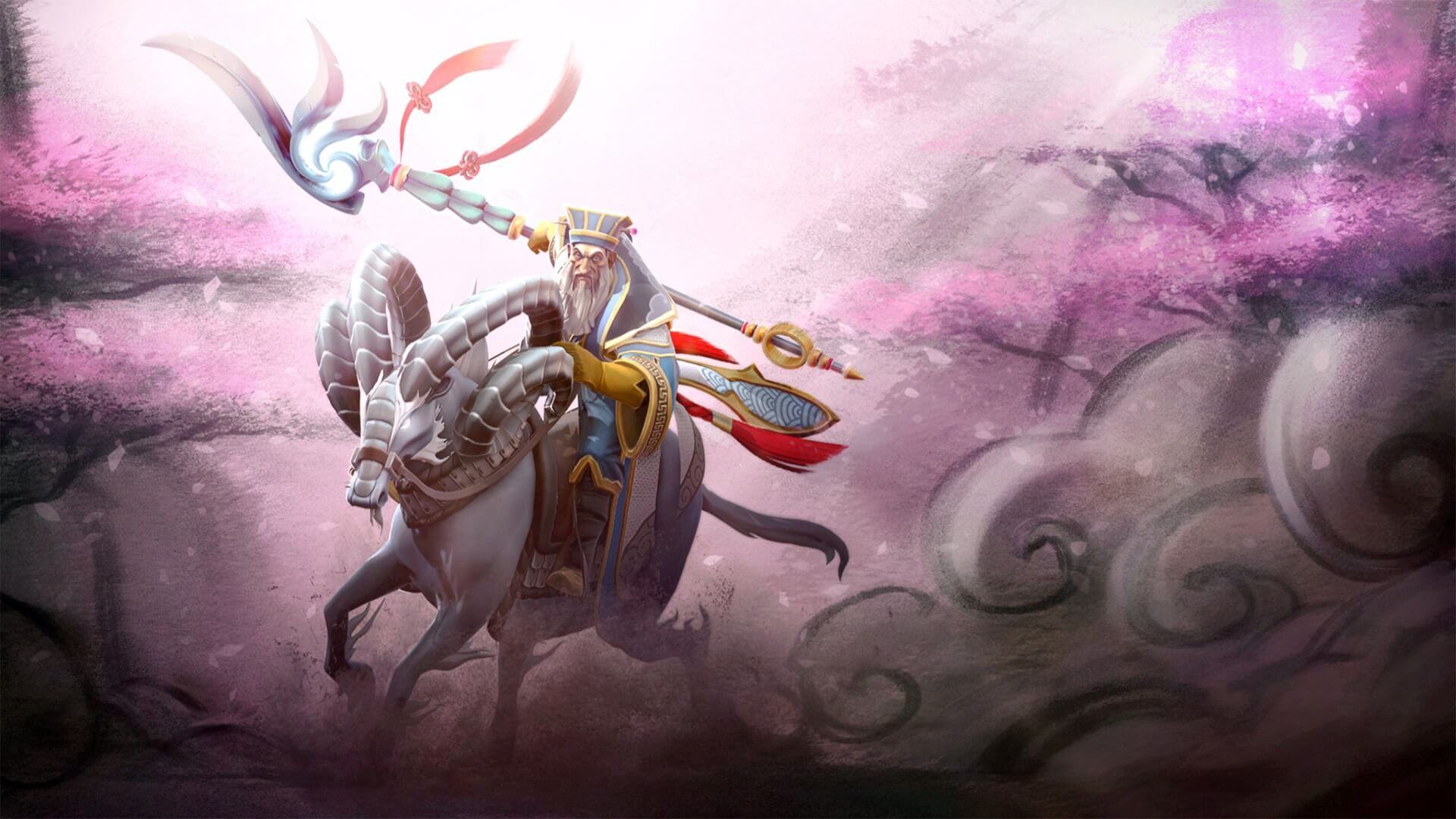Dota Underlords: Seasonal Rank System - October 2019

The rank system in Dota Underlords is composed of 8 ranks split in 5 tiers each. Find out the info shared by Valve developers Bruno Carlucci and Jeff Hill on the MMR system.
I will update this article over time including all the info we have on the rank system and distribution.
Beta Season
October 2019
The Big Update released on October 24th massively improved the game, but the ranked system was not touched.
When this update rolls out, ranked play will be disabled for a few hours as we watch to make sure things are stable. Once we set ranked live, player ranks will be compressed a bit as part of the new update.
August 2019
New ranked system
Update #213 released on August 1st brought several changes to the Dota Underlords rank system. We will summarize them.
There are now two multiplayer queues: Casual and Ranked mode.
Casual
You will be matched against opponents of your same skill level.
You can queue up solo or with friends.
The games played in this mode do not affect your rank.
Ranked
Your rank is used to find opponents.
New players will need to unlock ranked mode by playing 5 casual games.
Note: Daily challenges and achievements can be earned in both game modes.
Gaining and losing rank
Previously, you would gain and lose rank depending on both your placement and the ranks of your opponents, while now your rank changes based solely on where you finish in a Ranked match.
The rank is indicated with a number, so you can check your improvements after every game.
Any time you reach the next minor Rank, you are granted bonus points.
Just like before, you can’t drop below a major Rank after reaching it.
The image below shows the rank points you will gain/lose based on your placement in a match, and the rank points required to reach a particular rank.
Rank points by placement and rank - Valve
Ranked parties
The Dota Underlords developers are aware that parties in ranked could be abused to exploit the ranked system, so they put some limits to prevent them:
Only parties of up to three players are allowed in Ranked mode.
If party members do not have the same rank, the highest rank is used for matchmaking.
You earn and lose a different amount of rank points when playing in a party, as shown by the table below.
| Placement | 1st | 2nd | 3rd | 4th | 5th | 6th | 7th | 8th |
|---|---|---|---|---|---|---|---|---|
| Party of 2 | +88 | +63 | +33 | 0 | -33 | -63 | -88 | N/A |
| Party of 3 | +75 | +50 | +15 | -15 | -50 | -75 | N/A | N/A |
The table doesn’t include the 8th place because when playing in a party your placement is calculated relative only to non-party members. For example, if two friends party up and the first one to be eliminated finishes in 4th place overall, his rank would increase by 33.
Lord of White Spire changes
After the introduction of the new ranked system, several players complained that the Lord of White Spire rank evolved into a list of players who play Dota Underlords the most.
The developers released a solution with the August 14th update: now, Lord of White Spire rank score is updated using the standard Elo formula.
In this system, the number of rank points gained or lost depends on the skill of your opponents. The higher your Rank Score compared to your opponents, the more you have at stake: a win will result in a smaller increase, and a loss will result in a larger decrease.
Furthermore, it is possible for Rank Score to decrease when placing 4th or above and increase when placing 5th or below, depending on the Rank Scores of your opponents.
Biss Boss players will continue using the old system, even when facing Lords of White Spire players in their games.
Parties are still allowed, and your friends may find Lords in their matches.
As before, players in the same party do not affect each other’s rank.
June and July 2019
There is not a casual queue, so every Multiplayer match is a ranked game.
The Beta season will last a few months, and it will conclude with the launch of the first competitive season, which will bring a new rotation of heroes, alliances, and items.
There are a total of eight ranks split in five tiers each:
Upstart
Grifter
Outlaw
Enforcer
Smuggler
Lieutenant
Boss
Big Boss
“Upstarts can only gain rank if they end up top 6 and everyone else, top 4. However, you can still lose rank if you end up below someone with a worse ranking.”
Generally, it is necessary to reach at least the top 4 in a match to rank up. There is a hidden numerical MMR, and after each game we lose or gain points based on our placement and the rank of the adversaries.
We can still lose rank if opponents with a worse rank obtain a better placement than us. In Dota Auto Chess, you were pretty much guaranteed to not lose points only if you reached the top 2, so we can speculate that the rank system in Dota Underlords might be similar.
Bruno also affirmed that they are working on a progress bar. It will probably be like the one used in Dota 2 to track how far we are from the next medal.
Dota Underlords Beta season rank medals - Wykrhm Reddy
Underlords uses a modified Glicko1 score
Valve developer Jeff Hill provided detailed info on how the Dota Undelords ranking system works:
Initial Calibration
“Underlords internally tracks your skill for matchmaking using a modified Glicko1 score.
To present your rank, we calibrate a rank score that converges to your Glicko over a calibration period that’s on average around 25 games. This rank score is what gives you a badge so you’ll see your badge level rising fairly often during this calibration period.
After this calibration period, you can expect your rank score to track closely with your Glicko, with one caveat. No matter how far your Glicko might fall, we won’t decrease your rank score below a major rank. You will enter matchmaking using your unmodified Glicko, but you won’t lose badge progress below this floor.
We felt this was a balance between letting your rank fall due to a losing streak, and outright losing the sense of accomplishment you’d attained from having a higher peak score within a season.”
During your first 25 games, the system will figure out your skill level with a hidden skill level score, so the rank will fluctuate a lot. After the calibration, it will take longer to rank up.
The rank medal indicates “the peak of your skill during the season”. Once obtained a certain medal, you will retain it as your best achievement for the current season (independently from your performance afterwards).
Losing games will decrease both your hidden MMR and your tier, but your profile badge won’t decline below a major rank: Grifter, Outlaw, Enforcer, etc.
Recalibration at season end
“All of these value will be recalibrated each season in a way that has yet to be determined. It’ll almost certainly be a “soft-reset” type of system, where we open up uncertainty on the Glickos, and hard reset the rank score to let your badge recalibrate for the season.”
At the end of the season there will be a soft reset that will add again some uncertainty to your skill score.
The medal badge will hard reset so you will be able to earn a new one.
Crucible of Light loading screen for KotL - Valve
Gaining and losing rank
Jeff and Bruno also explained how the system calculates if we should gain or lose rank at the end of a match.
Summarizing, the game predicts where we are estimated to finish, and we gain or lose MMR depending on our actual placement.
“It depends on the ranks of all players in the game, your final placement, and the value of your rank uncertainty (how stable your rank is). It’s not as simple as top 4 / bottom 4, because we can get much more data about your skill from your final ranking than just a simple W/L.”
There are several factors in play:
The “real” rank of all the players in the game.
Do not forget that each player profile displays the peak seasonal badge, but their actual MMR might be lower.
You placement in the match (top 4 doesn’t guarantee a rank increase).
The value of your rank uncertainty according to the Glicko score.
“You can roughly think about it this way: Based on your Glicko and your opponents’, you are expected to place somewhere between 1 and 8. If you overperform, you’re more likely to go up, if you underperform you’re more likely to go down. If you end up 2nd AND you were the best player in the game by a large margin, you might lose some rank.”
We don’t know yet the exact rank distribution, the percentage of players at each tier, and if the top rank is open or limited only to the best 100/200 players, but Dota Underlords is still in beta and hopefully Valve will provide a proper API to gather data in the future.
More Dota Underlords Articles:
Header image (Acid Hydra loading screen for Venomancer): Valve



